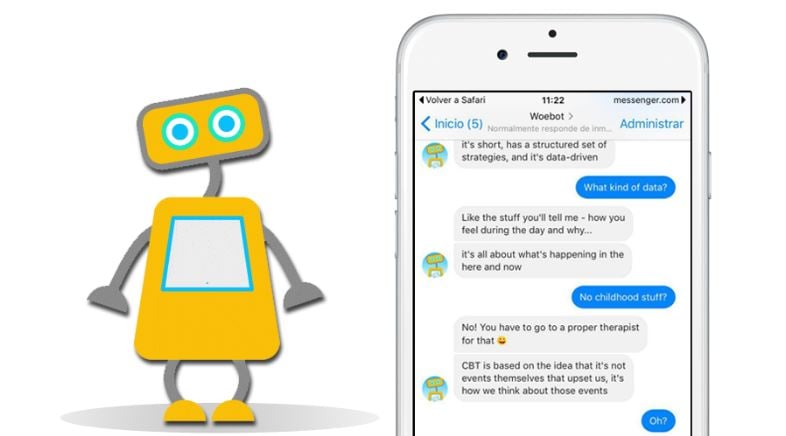Engaging Customers in a Regulated Industry with Social Chatbots in Asia Pacific | Q&A with Bruce Li, MSD
Bruce Li
Asia Pacific Digital Lead for Vaccines, MSD
A digital specialist with over 12 years’ experience in digital strategy and brand management, ranging from banking, advertising, and healthcare in Asia Pacific and the Middle East. Bruce has made significant successes in his digital and social media transformation roles across the businesses and people he has worked with. Most recently, Bruce has been leading the Digital, Social and Analytics Center of Excellence for MSD Asia Pacific. He is also part of the CMO team driving digital strategy, transformation and change management across the business.
1. Chatbots have the potential to save companies $8 billion USD annually in organizational costs. What are the key advantages of intelligent chatbots for pharmaceutical companies?
There are multiple advantages for pharmaceutical companies to adopt intelligent chatbots. One way to look at this is through the stakeholders and processes they impact :
- Internal stakeholders
- Processes and standard operating procedures (SOPs) for company employees and healthcare providers. Having a chatbot assists with navigating through processes, SOPs, and compliance.
- An online helpdesk, in the form of chatbots that can function 24/7 to assist patients and HCPs, alleviates the workload of traditional face to face helpdesks.
- External stakeholders:
- Consumers: focusing on disease awareness to ensure the public is well informed on diseases that can impact their lives.
- Patients: treatment adherence and awareness so they are well informed and take their medication in an effective and timely manner.
- Healthcare professionals (HCP): If there are any inquiries on a certain product, HCPs can easily access information on it quickly and efficiently on demand.
Overall, intelligent chatbots could help provide communication and engagement in a structured, accurate, and compliant manner.
2. What is the foundation of a successful chatbot strategy?
With all industries, there are multiple steps to successfully deploying a chatbot. For pharmaceutical companies, the process involves on-going optimization and updates to ensure that we’re always able to deliver accurate and up-to-date information based on consumer and HCP needs.
Key steps include:
- Understanding your target audience and buyer personas
- Identifying their intentions for using a chatbot: what kind of functional benefits and purposes will it serve?
- Recognize how the chatbot fits in the overall journey of the user
- Identify what the minimal viable product is, and keep improving from feedback
- Executing the technology stack and its scalability towards building an intelligent chatbot
Within Asia Pacific, mobile-driven markets like Indonesia, India, and The Philippines, are where chatbots would be the most applicable and relevant. If you consider how people are using text and social messaging across different countries, you can predict how chatbots would be relevant to that landscape.
The challenge is in the technology, and how organizations can understand what purpose it should serve.

3. How can pharmaceutical companies utilize social chatbots to optimize the HCP and patient journey?
This depends largely on the need you are trying to fulfill in the patient journey.
For example, HCPs who are looking for scientific data or news need to look through tons of information. Chatbots, especially those powered by AI, can help streamline this content discovery or exploration journey. By asking the chatbot what you are searching for, and providing feedback for its reponses, it will have the ability to filter out noise and give you more accurate content.
For patients, chatbots help to provide a layer of anonymity, especially those concerned about disease stigma but who would like to find out more information pertaining to the disease. We would also need to look at whether the patient’s need pertains to adherence or fulfillment. In these cases, we can view chatbots as a personal assistant, potentially supplementing or automating roles such as sales representatives, in addition to helping with diagnosis and treatment schedules.
4. Social media has been identified as a potential new channel for drug safety monitoring. How do you foresee companies in the Asia Pacific harnessing social chatbots for pharmacovigilance? What precautions or considerations should companies take?
Developing a healthcare chatbot involves technological and compliance complexities that go beyond the average consumer goods chatbot. In addition to serving its purpose, a healthcare chatbot must be able to detect cases related to drug safety, inform users and provide them with options to report any potential cases to health authorities in accordance with the governing regulatory body.
If the chatbot itself is unable to identify, analyze, and evaluate these adverse events, it will have to be interfaced with another technical solution. Usually, this would be one with the ability to detect adverse events and send a signal to the chatbot so that it can provide a link to the user to report the case.
To complicate the matter, users tend to speak in an incomplete manner when talking to a chatbot, thus resulting in various complexities and challenges for drug safety monitoring, such as capturing the intent and context from different dialogues of users. Given the complexity of healthcare, this may also pose as a challenge for the intentions of pharmacovigilance.
5. When dealing with chatbots across various regions within the APAC market, how do you ensure they follow regulations with the respective regulatory bodies of the country?
Pharmaceutical companies are governed by worldwide guidelines on what kind of content can be communicated; this applies to any type of chatbot used in the industry. Additionally, local regulations would require certain nuances and portions to be excluded or included from branded content and communications. This impacts the scalability of deploying chatbots across different markets.
When we discuss the scalability of chatbots, often it is about the volume of reach and the expansion to healthcare sectors. Some of the challenges and restrictions regulations impose on chatbot scalability comes down to the fact that with such a diverse region with equally diverse regulatory bodies, it is difficult to have a singular chatbot platform that satisfies all regulatory laws. Because of this, the scalability of chatbots can be suffocated.
Another regulation to consider is data privacy and protection; how identifiable is the insight gathered about a person and how is it being used and stored? Patient health information must be safeguarded as a top priority. This means that with chatbots, sensitive information that has the potential to identify patients need to be secured. Questions like these will definitely come up as patient confidentiality is a prime concern for many.
There are limitations to what a chatbot can really do as well. You would need to consider the classification of chatbots and what kind of chatbots you are implementing for your company. Is it a patient support tool, a search assistant, or a virtual GP? There are also chatbots that facilitate mental health treatment by asking questions to mental health patients. For chatbots dealing with various treatments, companies will need approvals from regulatory bodies to use them as such.
6. Do you foresee the different types of healthcare chatbots being combined into one?
Chatbot intelligence depends largely on having different data points for it to become more cohesive and accurate. The more questions and linguistic information is added, the more intelligent it becomes.
Seeing that healthcare chatbots can assume a varying range of objectives, from nutritional advice and mental health wellness, to tracking health symptoms and medication reminders – a combined healthcare chatbot would require the synthesis and integration of multiple different elements, features, and decision trees.
With different levels of complexity and approval processes from regulatory bodies, resource and time intensiveness, data security limitations, etc. combining these different databases of information would require a complex set of security, anonymity, and compliance conditions to be set in place.
7. What are some challenges for personalizing engagement at a scale through chatbots?
Personalizing engagement at scale requires customers to be segmented into different groups according to different properties. Unless your users are identifiable through information from your internal database, it difficult to achieve personalisation.
At this point of time, chatbots could help to further engage patients through content that is more personalised and relevant based on the key topics they have asked or interacted with the most in the past.
With more usage and data gathered from chatbots in the healthcare industry, opportunities for personalisation at scale will most definitely increase, due to its ability to collect more valuable data points, and advancements in deep learning algorithms and artificial intelligence.
8. What major innovations in social chatbots have you seen in the pharmaceutical/healthcare sector in recent months?
Image recognition artificial intelligence (AI) is one major innovation. The ability to carry out diagnosis based on Q&A and even image recognition could be a reality in the near future. For example, patients could upload an image of their tongue to be scanned, or take photos of a mole to detect whether it is cancerous or not. Image recognition, when paired with structured questions and answers could potentially help develop chatbots as a first line of diagnosis GP.
Mental health bots are also starting to appear more frequently. These chatbots have proved to be impactful in assisting with mental health of individuals, due to them being readily available to communicate with and provide empathetic support at all times. An example of this is the Woebot, an online messaging tool with a chatbot designed for patients with depression or anxiety.

To conclude, chatbots are starting to redefine the brand experience within the pharma industry. They don't just serve as a customer support portal and handling simple questionnaires like before, but they also have the capability to assist sales rep, treatment notifications for the patients, and diagnostics for customers. With the implementation of an AI-based chatbot within the space, this can provide valuable insights that can be used to design effective patient segmenting and the likes. Discover 4 reasons why pharmaceutical companies should use chatbots.
Bonus: Read more about how pharmaceutical companies can bridge gaps in their pharmacovigilance strategies using smart social chatbots and other digital methods such as social listening! Download our industry guide.
Written by Kevin Tran
With experience in the pharmaceutical and biotechnology sector, Kevin is eager to discover new technology and methods to transcend patient healthcare. In his downtime, he enjoys traveling and playing video games.
